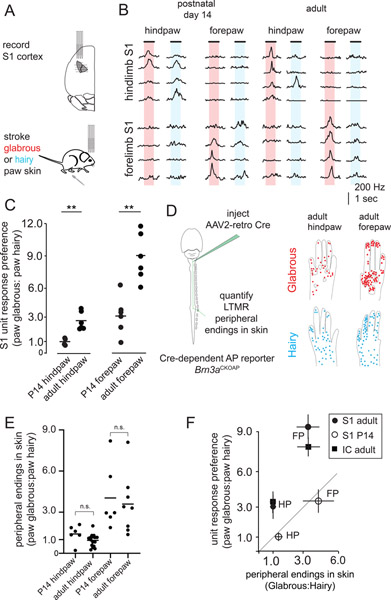Figure 1. Central representation of glabrous skin expands over postnatal development while receptor density is stable.
A. Hindlimb and forelimb S1 regions were stereotactically targeted with multiple multielectrode array (MEA) recordings in adult and postnatal day 14 (P14) mice.
B. MEA recordings from S1 at two developmental time points. Representative trial-averaged responses to touch of glabrous and hairy skin for hindpaw (top) and forepaw (bottom) regions of somatosensory cortex reveal a preference for glabrous skin stimulation that emerges over development.
C. The ratio of neurons preferentially responding to gentle stroke of glabrous or hairy skin for forepaw S1 and hindpaw S1. An increase in the proportion of neurons preferring glabrous skin stroke occurs over development (n = 4 for P14 hindpaw S1, 6 for adult hindpaw S1, n=6 for P14 forepaw S1, n=6 for adult hindpaw S1, one-way ANOVA, p < 0.01, ** Bonferroni corrected p < 0.01, Mann-Whitney U test).
D. (left) AAV2-retro-Cre virus was injected into the dorsal column nuclei to retrogradely label Aβ-LTMRs in Brn3APCKOAP reporter mice. Aβ-LTMR terminals were identified in skin to make estimates of relative innervation density. (right) Compilation of all endings identified in the paws of adult animals that received dorsal column injections, super-imposed on reference images of paws (n=121 neurons from 6 animals for hindpaw skin, n=209 neurons from 7 animals for forepaw skin). Each dot represents a single Aβ LTMR terminal ending in skin.
E. The relative number of Aβ LTMR endings in glabrous or hairy forepaw or hindpaw skin is stable from P14 into adulthood (n=6 animals for P14 hindpaw and forepaw, n=12 animals for adult hindpaw, n=7 animals for adult forepaw, p > 0.025, Bonferroni corrected Mann-Whitney U test). For each paw, glabrous:hairy innervation density ratios were calculated by dividing the number of endings per square mm in paw glabrous skin by the number of endings per square mm in paw hairy skin.
F. (left) At P14, glabrous skin preference ratios for both forepaw (FP) S1 and hindpaw (HP) S1 are equivalent to innervation density. In adults, a greater proportion of S1 neurons respond to glabrous skin stimulation than predicted by innervation density, and a similar effect is seen in the inferior colliculus, a second major tactile area (right). Together, this demonstrates a developmental expansion of glabrous skin representation in multiple brain regions that is independent of peripheral receptor density.

